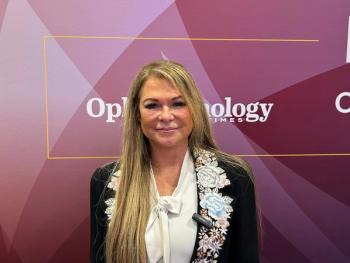
Treatment for diabetic macular edema yields positive study results
Results from a phase III study investigating intravitreal ranibizumab for the treatment of DME show that the anti-vascular endothelial growth factor agent was well-tolerated and met its primary efficacy endpoint.
Boca Raton, FL-Results from 24 months of follow-up in RISE, one of two pivotal phase III studies investigating intravitreal ranibizumab (Lucentis, Genentech) for the treatment of diabetic macular edema (DME), show that the anti-vascular endothelial growth factor (VEGF) agent was well-tolerated and met its primary efficacy endpoint, said Dennis M. Marcus, MD, here at the 34th annual Macula Society meeting.
About the RISE trial
The three treatment groups were well matched at baseline. Mean best-corrected visual acuity (BCVA) was about 20/80, mean central foveal thickness was more than 450 µm, and the population was ethnically diverse with significant proportions of African-American and Hispanic patients in all groups.
Visual acuity was measured at 1 week, 1 month, and monthly thereafter, and optical coherence tomography (OCT) measurement of central foveal thickness was performed monthly. The proportion of patients achieving a 15-letter or greater gain from baseline ETDRS BCVA at month 24 was analyzed as the primary efficacy endpoint and showed rates in the ranibizumab 0.3 mg and 0.5 mg groups were significantly higher than in the control arm (44.8% and 39.2% versus 18.1%).
Results from secondary analyses considering other functional endpoints and anatomic assessments also favored the ranibizumab arms, and the results of the safety analyses were consistent with data from prior large studies of ranibizumab for the treatment of age-related macular degeneration and retinal vein occlusion.
"The results from RISE support the efficacy of anti-VEGF therapy with ranibizumab for the treatment of DME, a condition for which there are no medications approved by the FDA, and the differences between the ranibizumab groups and the control arm at the 24-month primary efficacy endpoint are impressive," said Dr. Marcus, who is also professor of clinical ophthalmology, University of South Carolina, Columbia.
"It is also important to note that visual gains in the ranibizumab groups occurred quickly," he added. "At the first follow-up assessment at 1 week after the initial injection, there were already improvements in the ranibizumab group that were statistically significant compared with the sham group. Differences favoring ranibizumab over the controls in visual acuity and OCT thinning were maintained at every interval through 24 months."
At the 1-week visit, BCVA had improved by a mean of 5.4 and 4.6 letters in the ranibizumab 0.3 mg and 0.5 mg groups, respectively, compared with only 1.6 letters in the sham group. Data for the three groups from the 24-month visit showed mean improvements of 12.5, 11.9, and 2.6 letters, respectively, and at the same follow-up, a clinically significant loss in visual acuity (15 or more letters) occurred in only 2% of ranibizumab-treated patients compared with more than 10% of the controls, Dr. Marcus said.
The functional benefits associated with ranibizumab treatment corresponded with reduction of macular edema as demonstrated by OCT-measured thinning of the central fovea. A significant difference comparing both of the ranibizumab groups with sham was seen at 1 month (first follow-up OCT measurement) and was maintained at all successive timepoints. In the 24-month analysis, central foveal thickness decreased from baseline in the ranibizumab 0.3 and 0.5 mg groups by a mean of 250.6 µm and 253.1 µm, respectively, versus 133.6 µm in the sham injection group.
Newsletter
Don’t miss out—get Ophthalmology Times updates on the latest clinical advancements and expert interviews, straight to your inbox.



















































.png)


